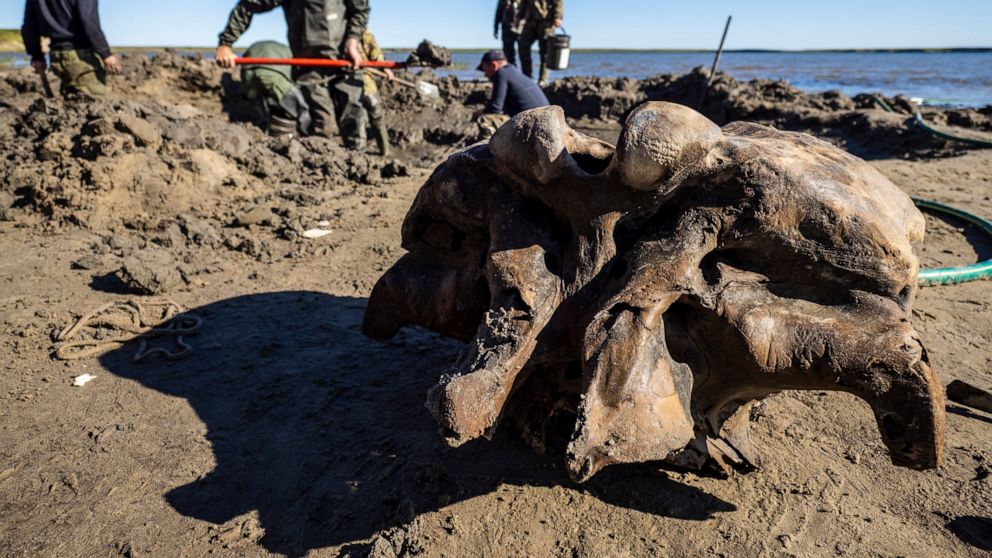
Russian scientists are working to retrieve a well-preserved skeleton of a woolly mammoth from a lake in northern Siberia.
MOSCOW – Russian scientists are working to retrieve the well-preserved skeleton of a woolly mammoth, which still has some ligaments attached, from a lake in northern Siberia.
Fragments of the skeleton were found by local reindeer herders in the shallow waters of Lake Pechevalavato in the Yamalo-Nenets region a few days ago. They found part of the animal’s skull, the lower jaw, several ribs and a fragment of the foot with tendons still intact.
Woolly mammoths are believed to be extinct about 10,000 years ago, although scientists believe that small groups of them may have lived longer in Alaska and on the Russian island Wrangel off the Siberian coast.
Russian television stations showed scientists on Friday looking for fragments of the skeleton in the muck of the lake.
Scientists have recovered more bones and have also located more massive fragments protruding from the slime. They said it would take a long time and special equipment to recover the rest of the skeleton, if everything had survived in position.
Yevgeniya Khozyainova of the Shemanovsky Institute in Salekhard said in televised comments that finding the complete skeleton of a mammoth is relatively rare. Such findings allow scientists to deepen their understanding of mammoths.
Several well-preserved frozen mammoth carcasses have been found in the permafrost of northern Siberia.
Siberia is experiencing a heat wave and the UN meteorological agency warned on Friday that average temperatures were 10 degrees Celsius (18 Fahrenheit) above average last month.
.